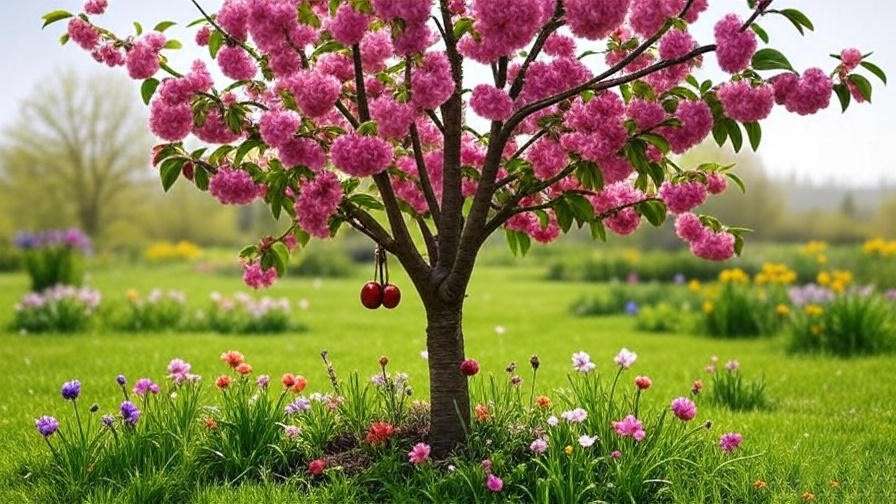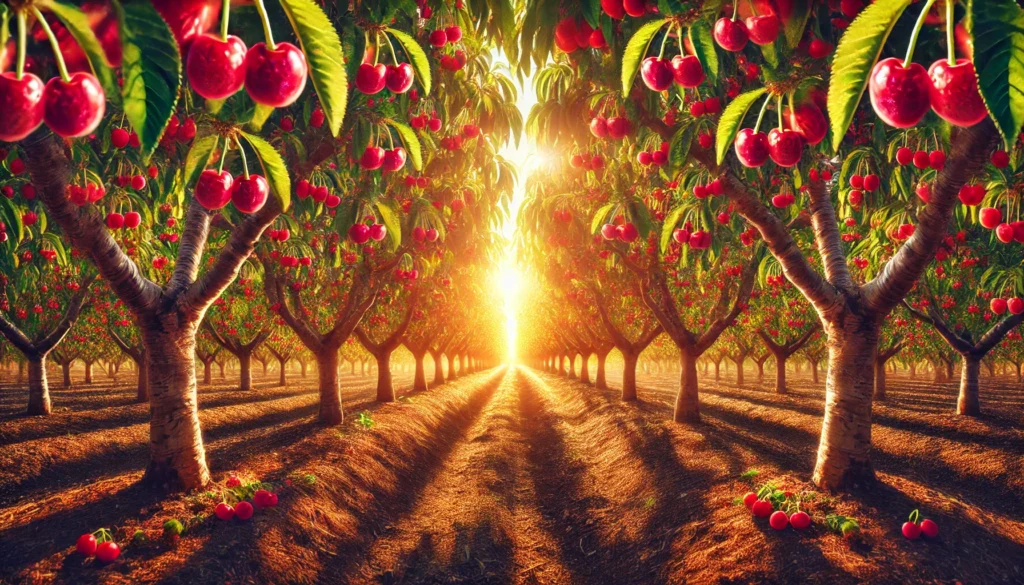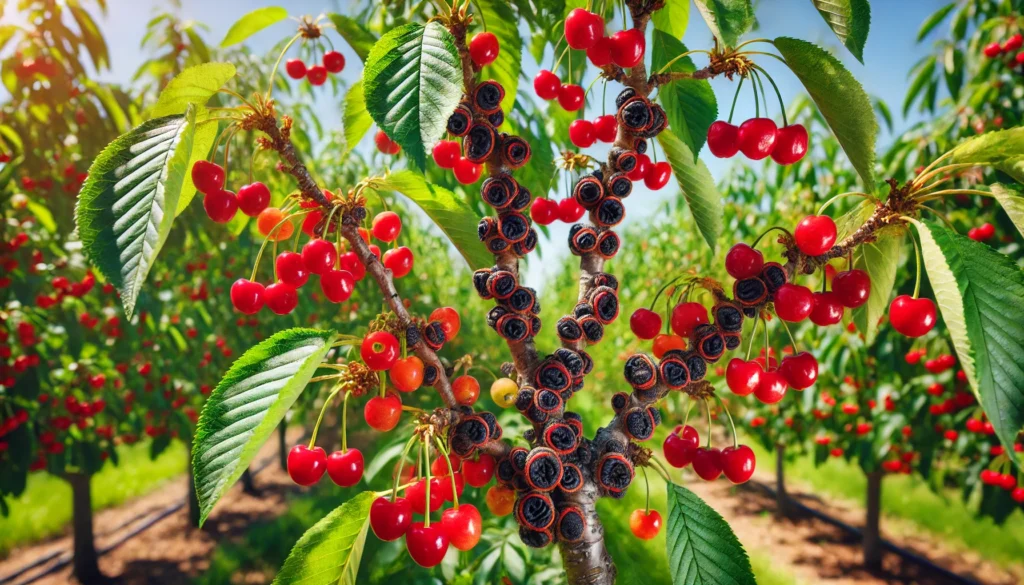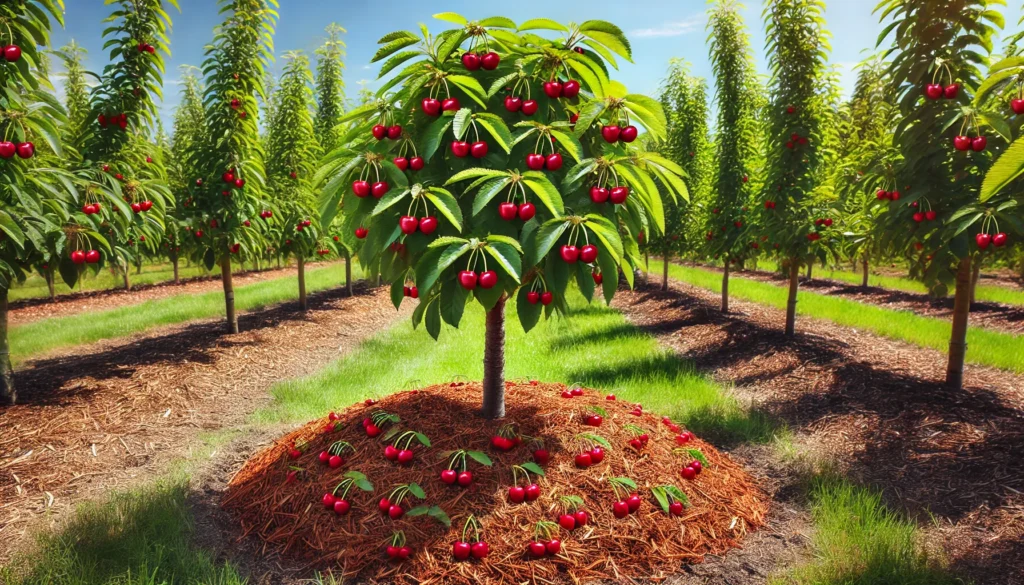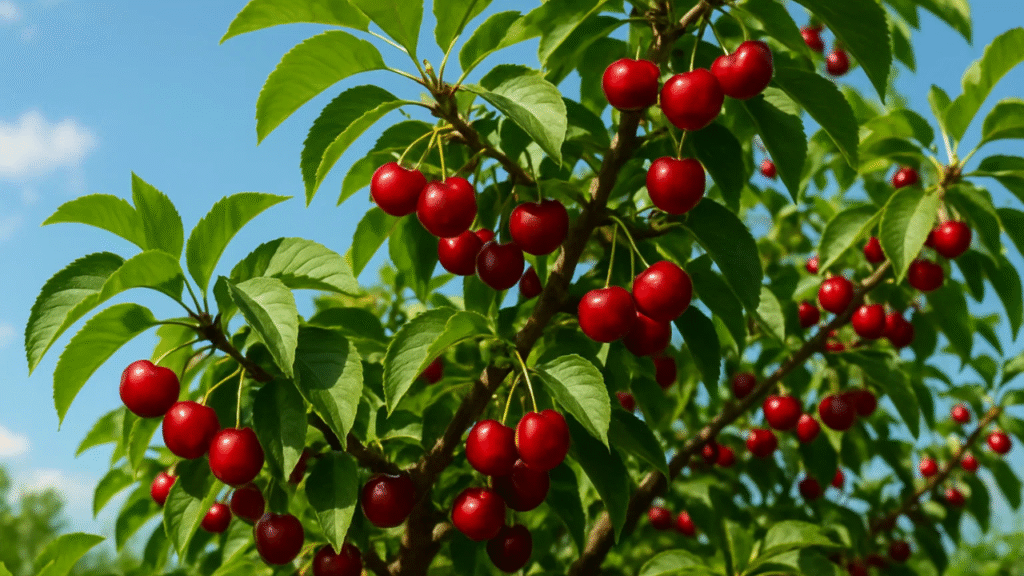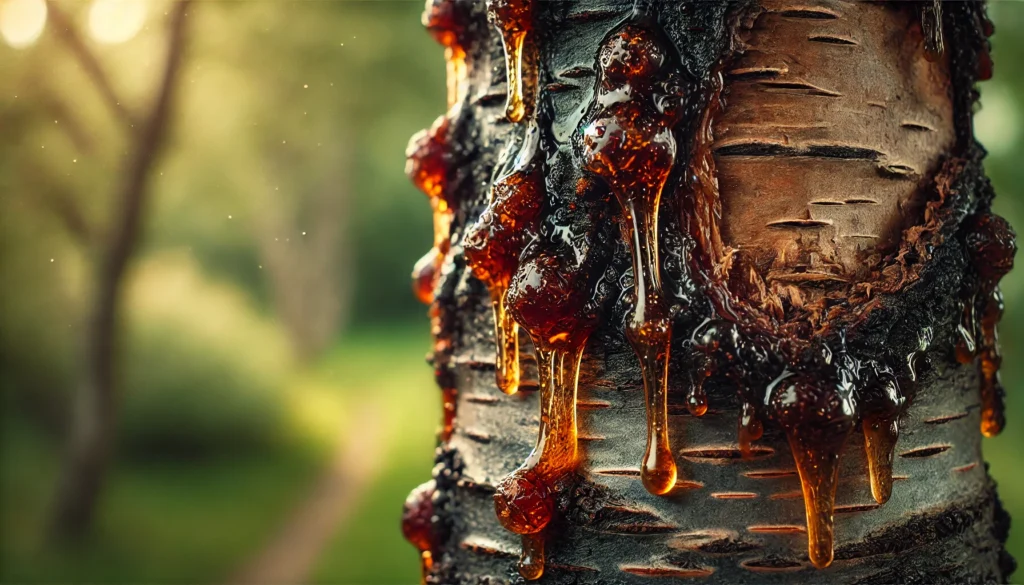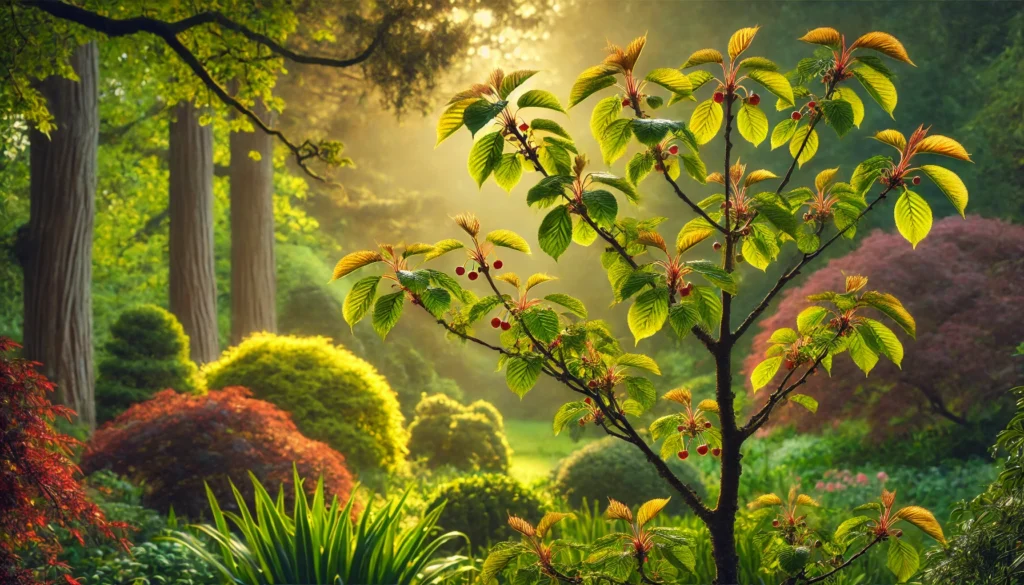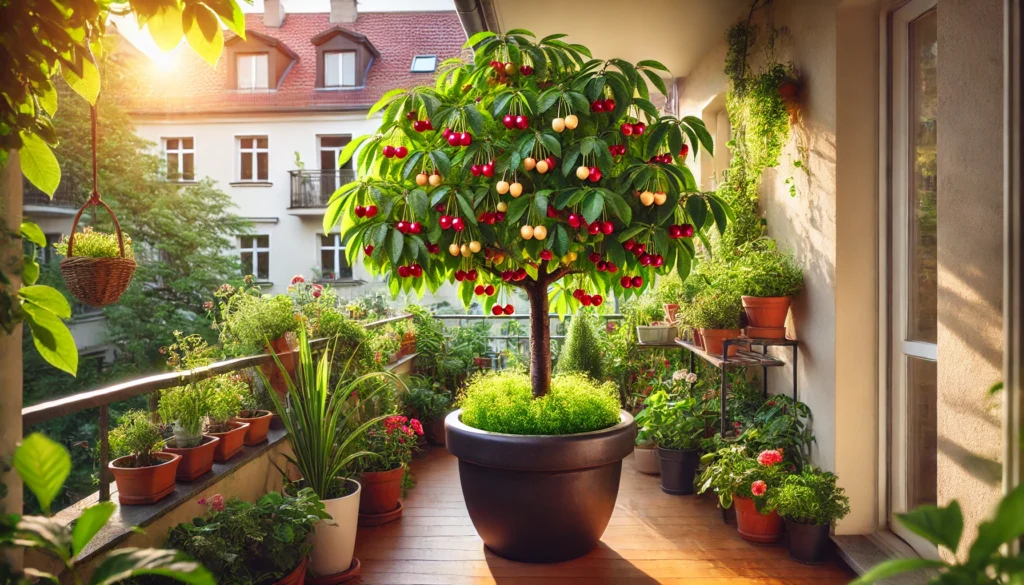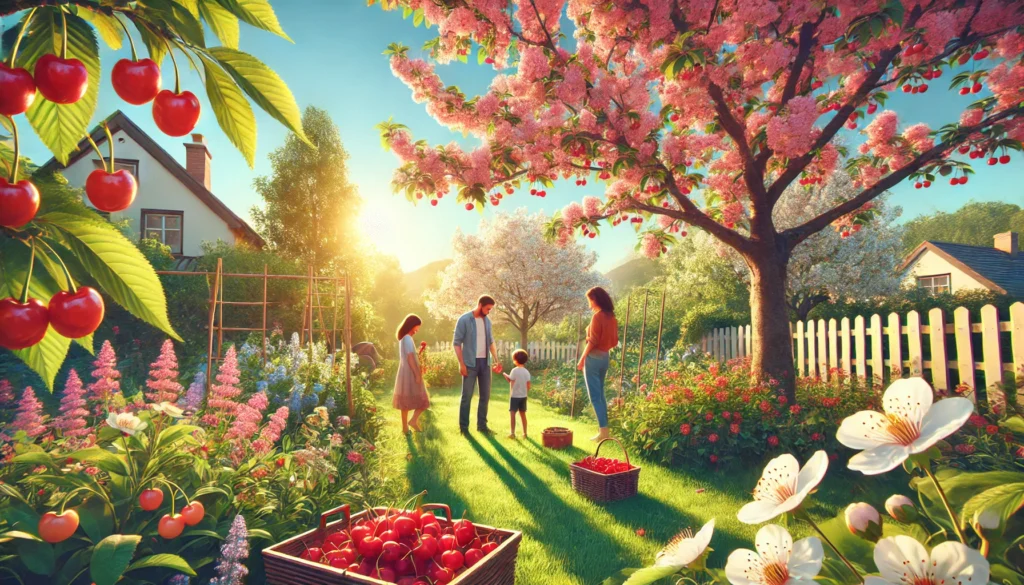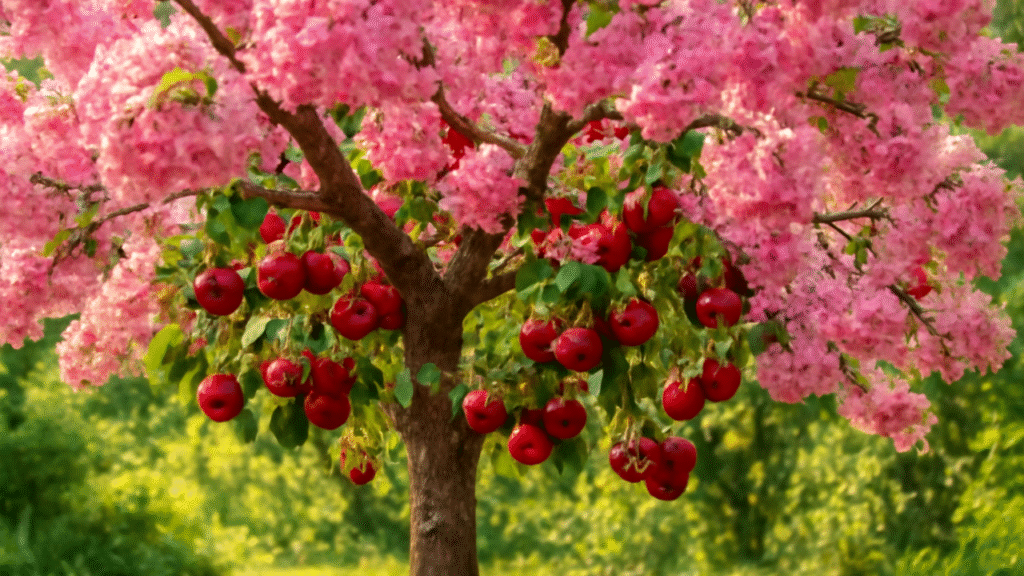Imagine stepping into your backyard and picking handfuls of sweet, juicy Van cherries from your very own tree! 🌸 The Van cherry tree, known for its vibrant, firm fruit, is a favorite among home gardeners for its delicious harvests and stunning spring blossoms. Whether you’re a novice gardener or a seasoned orchardist, growing a thriving Van cherry tree is within reach with the right knowledge and care. In this comprehensive guide, we’ll walk you through every step—from planting to harvesting—ensuring your tree flourishes and produces abundant, delectable cherries. Backed by horticultural expertise, this article offers practical, science-based advice to help you cultivate a healthy Van cherry tree that becomes the pride of your garden. Let’s dive in! 🌱
Understanding the Van Cherry Tree 🌿
What Makes the Van Cherry Tree Special?
The Van cherry tree, a cultivar developed in British Columbia, Canada, is cherished for its sweet, dark-red cherries that are perfect for fresh eating, baking, or preserving. This variety, introduced in the 1940s, is a hybrid of Empress Eugenie and Bing cherries, combining robust flavor with excellent firmness. Its medium-sized fruit, typically ripening in mid-summer, boasts a rich, sweet-tart taste that makes it a versatile choice for culinary uses. Van cherry trees are also prized for their cold hardiness and reliable yields, making them ideal for home orchards in temperate climates.
Ideal Growing Zones and Climate
Van cherry trees thrive in USDA Hardiness Zones 5-8, where winters are cold enough to satisfy their chilling requirements (800-1,000 hours below 45°F) but not so harsh as to damage the tree. They prefer temperate climates with warm, dry summers and at least 6-8 hours of direct sunlight daily. While adaptable, these trees perform best in well-draining, loamy soil with a pH between 6.0 and 7.0. In marginal climates, such as Zone 4 or 9, consider microclimate adjustments like planting on a south-facing slope or using windbreaks to protect against harsh winds.
Planting Your Van Cherry Tree 🌱
Choosing the Right Location
Selecting the perfect spot is critical for your Van cherry tree’s success. Aim for a location with full sun exposure to ensure optimal photosynthesis and fruit development. Avoid low-lying areas prone to frost pockets, as late spring frosts can damage blossoms. The soil should be well-draining to prevent root rot—test drainage by digging a 12-inch hole, filling it with water, and ensuring it drains within 24 hours. Space trees 15-20 feet apart to allow for their mature canopy spread, which can reach up to 15 feet.
Selecting a Healthy Tree
When purchasing a Van cherry tree, choose a sapling from a reputable nursery to ensure disease-free stock. Look for a tree with a straight trunk, healthy branches, and a robust root system. Bare-root trees are cost-effective and easier to plant, while potted trees offer flexibility for later planting. Inspect the roots for firmness and avoid trees with signs of rot or pest damage. A one- or two-year-old tree, typically 4-6 feet tall, is ideal for establishing a strong foundation.
Step-by-Step Planting Guide
Plant your Van cherry tree in early spring or fall for the best establishment. Follow these steps:
- Prepare the Hole: Dig a hole twice as wide and as deep as the root ball (about 2 feet wide and 18 inches deep).
- Amend the Soil: Mix native soil with compost or well-rotted manure to improve fertility and drainage.
- Plant the Tree: Place the tree in the hole, ensuring the graft union (the bulge where the rootstock meets the scion) is 2-3 inches above the soil line. Spread roots evenly.
- Backfill and Water: Fill the hole with soil, tamping gently to remove air pockets. Water thoroughly to settle the soil.
- Mulch and Stake: Apply a 2-3 inch layer of organic mulch (like wood chips) around the base, keeping it 6 inches from the trunk. Stake the tree if it’s in a windy area to prevent leaning.
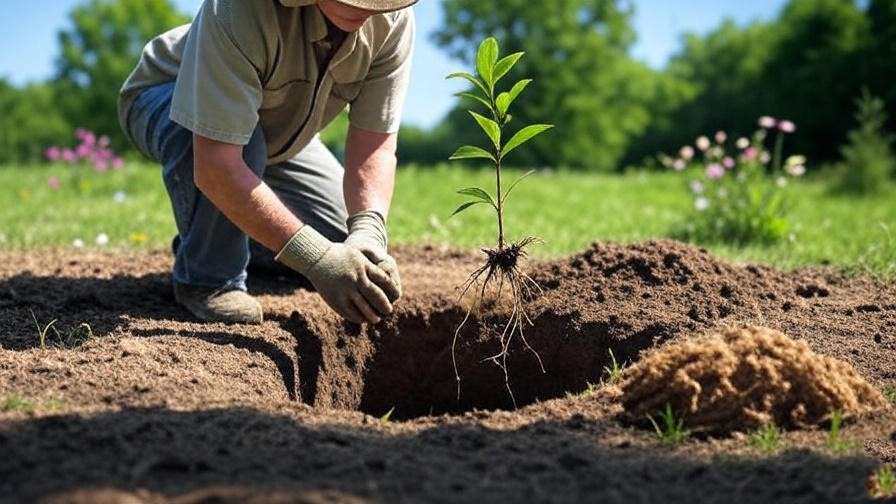
Essential Care for Van Cherry Trees 🌞
Watering Requirements
Proper watering is crucial, especially during the first two years. Water newly planted trees deeply (1-2 inches per week) to encourage root establishment. Established trees need less frequent watering—about 1 inch per week during dry spells. Use a soaker hose or drip irrigation to deliver water directly to the root zone. Overwatering can lead to root rot, so check soil moisture by digging 4-6 inches down; water only if the soil feels dry. In drought-prone areas, consider installing a rain gauge to monitor precipitation.
Fertilizing for Optimal Growth
Van cherry trees benefit from balanced fertilization to support growth and fruit production. Apply a 10-10-10 (nitrogen-phosphorus-potassium) fertilizer in early spring before bud break and again after harvest. For a 3-year-old tree, use 1 pound of fertilizer, increasing by ½ pound each year up to 5 pounds for mature trees. Spread fertilizer evenly around the drip line (the outer edge of the canopy) and water thoroughly. Organic options like composted manure or fish emulsion are excellent for sustainable gardening. Avoid over-fertilizing, which can lead to excessive vegetative growth at the expense of fruit.
Pruning for Health and Productivity
Pruning is essential to maintain tree health, improve air circulation, and boost fruit quality. Prune in late winter or early spring before buds swell. Follow these steps:
- Remove Dead or Damaged Wood: Cut away any broken, diseased, or dead branches using clean, sharp pruning shears.
- Shape the Tree: Aim for an open-center or modified central leader structure to maximize sunlight penetration.
- Encourage Fruiting Spurs: Shorten last year’s growth by one-third to promote spur development, where cherries form.
- Thin crowded branches to reduce disease risk and improve fruit size. Sterilize tools between cuts to prevent disease spread.
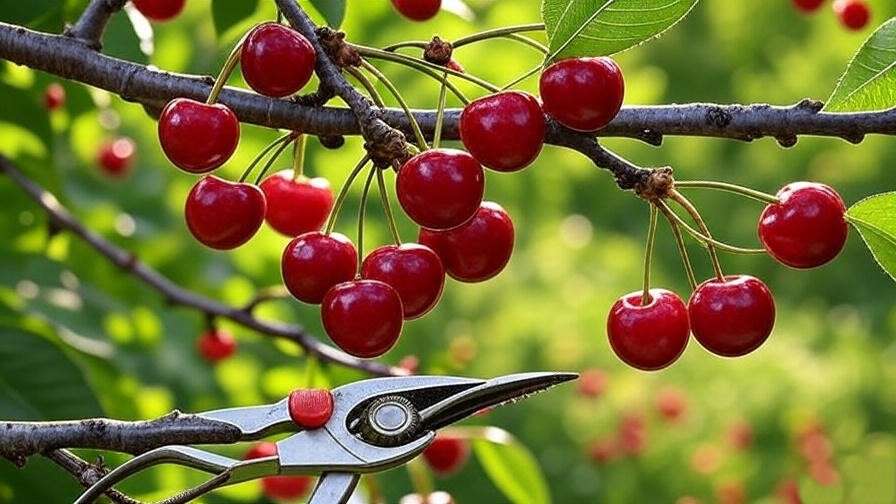
Pollination and Fruit Production 🍒
Understanding Pollination Needs
Van cherry trees are not self-pollinating, meaning they require a compatible pollinator variety to produce fruit. Popular choices include Stella, Bing, or Rainier cherries, which bloom at the same time. Plant pollinators within 50-100 feet to ensure effective cross-pollination by bees. To attract pollinators, incorporate flowering plants like lavender or clover near your orchard. If pollination is a concern, check local weather during bloom time—rain or cold can deter bees. Hand-pollination with a small brush can be a backup option in small gardens.
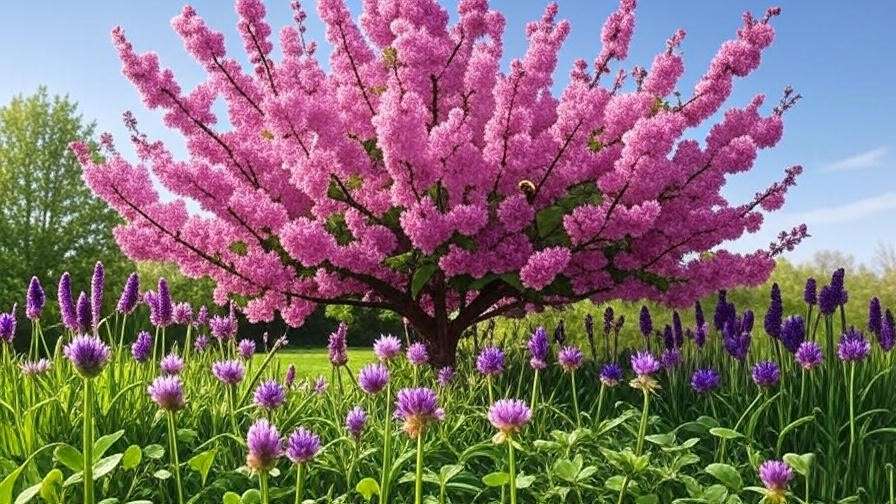
Maximizing Fruit Yield
Healthy Van cherry trees typically begin fruiting 3-5 years after planting, with peak production at 7-10 years. To maximize yield:
- Thin Fruit: Remove excess young cherries (when they’re pea-sized) to leave one fruit every 2-3 inches along branches. This prevents branch breakage and improves fruit size.
- Monitor Weather: Protect blossoms from late frosts with row covers or frost cloth.
- Maintain Tree Health: Healthy trees produce better fruit, so prioritize consistent care. Expect 30-50 pounds of cherries from a mature tree under optimal conditions.
Pest and Disease Management 🐞
Common Pests Affecting Van Cherry Trees
Van cherry trees can attract pests like:
- Aphids: Small, sap-sucking insects causing curled leaves. Control with insecticidal soap or neem oil.
- Cherry Fruit Fly: Larvae infest fruit, making it wormy. Use sticky traps or organic sprays like spinosad.
- Spider Mites: Tiny pests causing stippled leaves. Increase humidity and apply horticultural oil.
Encourage natural predators like ladybugs by planting companion plants such as marigolds. Regular monitoring and early intervention are key.
Diseases to Watch For
Common diseases include:
- Brown Rot: Fungal disease causing fruit rot and blossom blight. Remove affected fruit and apply fungicides like sulfur.
- Powdery Mildew: White coating on leaves. Improve air circulation through pruning and use potassium bicarbonate sprays.
- Bacterial Canker: Sunken, oozing lesions on branches. Prune infected areas and apply copper-based fungicides.
Maintain orchard hygiene by clearing fallen leaves and fruit to reduce disease spread.
Expert Tip: Integrated Pest Management (IPM)
Adopt IPM for sustainable pest control:
- Monitor Regularly: Check trees weekly for signs of pests or disease.
- Use Cultural Practices: Proper pruning, watering, and fertilization reduce stress and pest susceptibility.
- Apply Targeted Treatments: Use organic or chemical controls only when necessary, following label instructions.
Harvesting and Enjoying Your Van Cherries 🍴
When and How to Harvest
Harvesting Van cherries at the right time ensures the best flavor and quality. These cherries typically ripen in early to mid-summer, depending on your region—around June or July in most climates. Look for these signs of ripeness:
- Color: Fully ripe Van cherries are a deep, glossy red, sometimes with a slight purplish hue.
- Firmness: The fruit should feel firm but yield slightly to gentle pressure.
- Taste: Sample a cherry to confirm its sweet, slightly tart flavor.
To harvest, gently twist or snip cherries from the stem using clean pruning shears to avoid damaging branches. Harvest in the morning when temperatures are cooler to preserve fruit quality. Avoid pulling cherries, as this can tear the fruit or harm the tree’s fruiting spurs. Place harvested cherries in a shallow basket to prevent bruising. Regular harvesting also encourages continued production and reduces pest attraction.
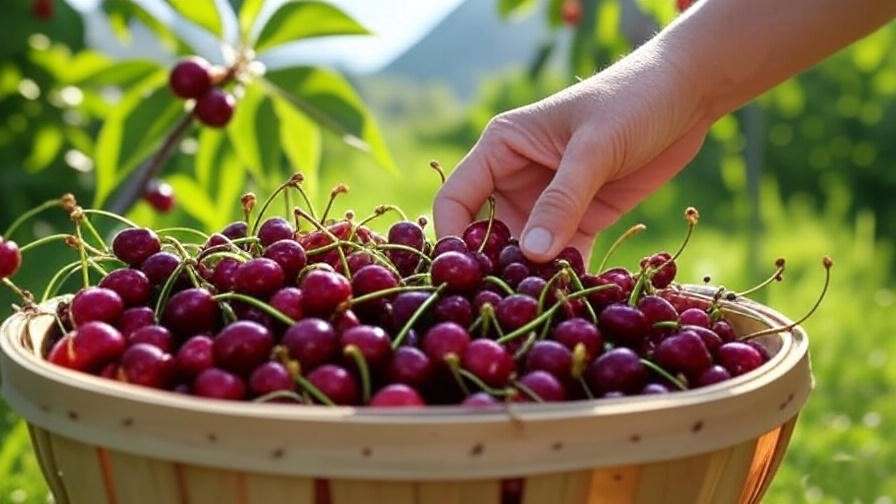
Storing and Using Your Cherries
Proper storage keeps your Van cherries fresh and flavorful:
- Short-Term Storage: Store unwashed cherries in a perforated plastic bag in the refrigerator’s crisper drawer for up to 2-3 weeks. Wash just before use to prevent moisture buildup.
- Freezing: Pit cherries and spread them on a baking sheet to freeze individually, then transfer to airtight freezer bags for up to 12 months.
- Preserving: Make jams, jellies, or pie fillings to enjoy your harvest year-round. Try a simple cherry jam recipe: combine 4 cups pitted Van cherries, 2 cups sugar, and 2 tablespoons lemon juice, then cook until thickened.
Van cherries shine in culinary applications. Use them fresh in salads, bake them into pies or tarts, or blend them into smoothies for a burst of flavor. Their firm texture also makes them ideal for canning or drying as a healthy snack.
Troubleshooting Common Issues ⚠️
Why Isn’t My Van Cherry Tree Fruiting?
If your Van cherry tree isn’t producing fruit, consider these common causes:
- Lack of Pollination: Ensure a compatible pollinator (e.g., Stella or Bing) is nearby and that bees are active during bloom time. Plant pollinator-friendly flowers like bee balm to attract them.
- Nutrient Deficiencies: Test soil for nitrogen, phosphorus, or potassium imbalances. Apply a balanced fertilizer if needed.
- Improper Pruning: Over-pruning or pruning at the wrong time can remove fruiting spurs. Follow the pruning guide above to maintain productive branches.
- Young Tree: Trees under 3-5 years may not yet be mature enough to fruit heavily. Be patient and focus on establishing tree health.
Solutions include hand-pollination for small orchards, soil testing through local extension services, and adjusting pruning practices. If issues persist, consult a local arborist for a tailored diagnosis.
Addressing Growth Problems
Common growth issues include:
- Stunted Growth: Often caused by poor soil, inadequate water, or root competition. Test soil pH and nutrients, and ensure proper irrigation. Remove nearby weeds or grass.
- Yellowing Leaves: May indicate overwatering, nutrient deficiency (especially nitrogen), or pests like spider mites. Check soil moisture and apply appropriate treatments.
- Weak Branches: Thin heavy fruit loads and prune to strengthen branch structure. Support heavy branches with props during fruiting season.
Regular soil testing and consistent care prevent most issues. If growth problems continue, consider environmental factors like compacted soil or excessive shade.
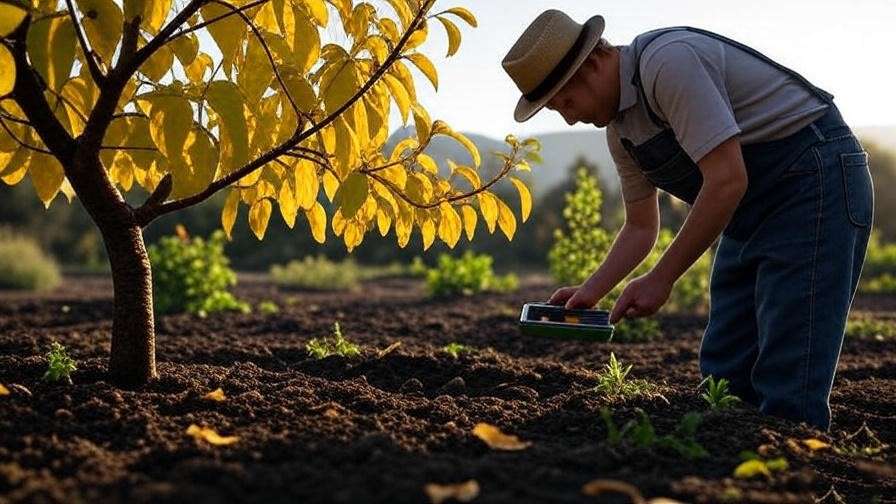
Seasonal Care Calendar 📅
A well-planned care schedule keeps your Van cherry tree thriving year-round. Here’s a month-by-month guide:
- January-February (Dormant Season): Prune to shape the tree and remove dead wood. Apply dormant oil sprays to control overwintering pests.
- March-April (Early Spring): Fertilize with a balanced 10-10-10 fertilizer. Plant new trees and monitor for early blooms. Protect blossoms from late frosts with row covers.
- May-June (Growing Season): Water consistently, especially during dry spells. Thin young fruit to improve quality. Monitor for pests like cherry fruit flies.
- July-August (Harvest Season): Harvest ripe cherries and remove fallen fruit to prevent disease. Apply a post-harvest fertilizer dose.
- September-October (Fall): Rake leaves to reduce disease risk. Mulch around the base to protect roots from winter cold.
- November-December (Pre-Dormancy): Water deeply before the ground freezes. Inspect for damage and plan for next season’s care.
Adjust this calendar based on your local climate, consulting USDA Hardiness Zone maps or local extension services for precise timing.
Expert Insights and Pro Tips 🌟
Horticulturists share these advanced tips for Van cherry tree success:
- Reflective Mulch: Spread reflective mulch (like white plastic) under the canopy to enhance fruit color and deter pests. Studies show this can increase light reflection by up to 20%, boosting photosynthesis.
- Companion Planting: Plant garlic or chives near your tree to repel aphids naturally. These plants also attract pollinators when flowering.
- Soil Health: Incorporate cover crops like clover in the off-season to improve soil fertility and structure, reducing the need for synthetic fertilizers.
Case Study: A home gardener in Oregon transformed their small backyard into a thriving Van cherry orchard by pairing their tree with a Stella cherry for pollination, using organic compost, and installing drip irrigation. By year five, they harvested 40 pounds of cherries annually, proving that small spaces can yield big results with proper care.
FAQs About Van Cherry Tree Care ❓
- How long does it take for a Van cherry tree to bear fruit?
Van cherry trees typically begin fruiting 3-5 years after planting, with full production by 7-10 years if properly cared for. - Can Van cherry trees grow in containers?
While possible with dwarf varieties, Van cherries thrive best in the ground due to their size and root system. Use a large container (20+ gallons) with excellent drainage if attempting container growth. - What are the best pollinators for Van cherry trees?
Stella, Bing, and Rainier are reliable pollinators, blooming concurrently with Van cherries for effective cross-pollination. - How do I protect my tree from birds and pests?
Use bird netting or reflective tape to deter birds. For pests, employ sticky traps, neem oil, or IPM strategies. - Why are my cherries small or tasteless?
Small or bland cherries may result from over-crowding (thin fruit), insufficient water, or nutrient deficiencies. Test soil and adjust care accordingly.
These answers draw from research by university extension programs and practical experience to address common gardener concerns.
Conclusion
Growing a thriving Van cherry tree is a rewarding journey that brings beauty, shade, and delicious fruit to your garden. By selecting the right location, providing consistent care, and addressing challenges like pests and pollination, you can enjoy abundant harvests for years to come. Follow the expert tips in this guide—planting in well-draining soil, pruning strategically, and fostering pollination—to ensure your tree flourishes. Start your Van cherry tree adventure today, and share your progress in the comments below! For more fruit tree care tips, explore our related articles or subscribe to our newsletter. Happy gardening! 🌳🍒

